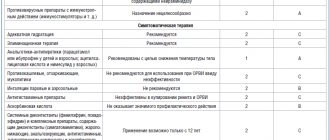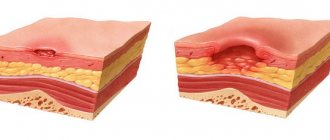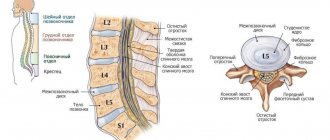What are acute respiratory infections and acute respiratory viral infections?
Both diseases are acute inflammations of various organs of the respiratory system, caused by various infections. Acute respiratory disease - acute respiratory disease - a broader name that is used when the viral component has not been established. And ARVI is an acute respiratory viral disease - when the clinical picture is clear and it is known for sure that the infection is caused by a virus. There are several such viruses: influenza, parainfluenza, respiratory syncytial infection, rhinovirus and adenovirus infection and others. Most often, the disease begins with an elevated temperature. Then it may be supplemented by headache, general weakness, fatigue, aching bones, redness of the pharyngeal mucosa, pain when swallowing, dry cough and nasal congestion. Among the troubles that accompany acute respiratory infections is the addition of a bacterial infection to the disease, which causes complications.
Causes of acute respiratory infections
Hypothermia is the main, but not the only reason why the common cold occurs. The gas pollution and dustiness of modern cities, various allergens, and air dried by air conditioners and radiators irritate the respiratory tract, causing various respiratory diseases. Another factor contributing to the prevalence of colds in the cold season is the people themselves, or rather their reluctance to be treated at home and adhere to the bed rest recommended by experts. We simply feel sorry for spending precious days of our lives aimlessly, as it seems to us, lying in bed with a thermometer and a cup of warm tea with lemon.
A person is drawn to heroic deeds and labor achievements, therefore, despising fever, headache, cough, runny nose and weakness, we go to where there are many people who are still healthy. Just one cough or sneeze is enough for a citizen with a weakened immune system to catch the infection. Thus, the number of sick people increases, and sometimes their number reaches such a level that the media begin to massively report on the epidemic. It’s clear that everything would be much simpler if everyone who suffers from acute respiratory infections simply stayed at home in their bed until they fully recovered.
Risk factors
Almost every person knows first-hand what acute respiratory infections are. For the vast majority of adults, unpleasant symptoms of acute respiratory infections make themselves felt 2-3 times a year. As a rule, the peak incidence occurs in the damp and cold seasons, during a period of decreased protective function of the body and increased activity of viruses. For various reasons, acute respiratory infections and acute respiratory viral infections are particularly dangerous for people over 55 years of age, asthmatics, diabetics, with endocrinological and neurological problems, as well as for hypertensive patients. Pregnant women should be very careful.
Diagnostics
Diagnosis of acute respiratory infections is based mainly on clinical symptoms of inflammation of various parts of the respiratory tract and the results of a medical examination. Given the predominantly mild course of the cold, no additional research is required. Virological diagnosis is usually not carried out, the nature of the pathogen remains unspecified - acute respiratory tract infections do not require specific treatment4,5.
Bacteriological analysis of throat swabs and rapid tests for group A beta-hemolytic streptococcus make it possible to differentiate common viral sore throats and pharyngitis from dangerous bacterial diseases that require immediate antibiotic therapy4,5. Bacteriological examination is also indicated in case of complications development and lack of effect from the antibiotics used4.
Up to contents
Prevention of acute respiratory infections and acute respiratory viral infections
The only way to protect yourself from the flu is to get vaccinated. No medications provide a proven effect in preventing viral diseases. But the likelihood of catching ARVI can be reduced if you take preventive measures. Avoid crowds of people.
Viruses are transmitted by airborne droplets, so during epidemics it is worth protecting yourself as much as possible from contact with crowds.
This is the most reliable, albeit not always accessible, method. Strengthen general immunity.
To do this, it is enough to eat right, avoid lack of sleep and stress, and find time to play sports or at least take daily walks.
Strengthen local immunity.
When the mucous membranes dry out, the protective barrier that should protect us from viruses is reduced.
In this case, the risk of infection becomes higher. Therefore, it is important to avoid dry indoor air - frequently wash the floors or use a humidifier. Wash your hands regularly.
During epidemics, wash your hands or treat them with antibacterial gel every time after external contact.
Treatment of upper respiratory tract infections
All methods of treating colds can be divided into non-drug and medicinal.
Non-drug methods
Mode
In most cases, treatment of acute respiratory infections does not imply hospitalization, but compliance with the home regime is always mandatory. Moreover, it is better to spend the first days of the disease, while the fever persists, in bed. This is especially important for children, but adults should not ignore this rule either.
Hygiene measures
It is necessary to maintain a room temperature of about 200 C and a humidity of about 50-70%, which is achieved through wet cleaning and frequent ventilation of the room2. Heat and dry air “dry” the airways, intensify coughing and promote bacterial infection. Cold and excessive humidity in the room lead to hypothermia and aggravate the course of acute respiratory infections.
To purify the air from viruses and bacteria, it is recommended to use ionizers, bactericidal and ultraviolet lamps2. They help reduce the risk of bacterial complications during treatment and also protect family members and guests from respiratory tract infections.
Diet
The diet should be chemically and mechanically gentle, aimed at fully satisfying the body's needs for nutrients, vitamins and microelements. It is better to exclude spices, spices and smoked foods, limit salt and sugar intake, reduce the amount of sour and carbohydrate foods: sweets, flour products, potatoes, legumes and corn. You should not get carried away with raw vegetables and fruits; it is optimal to consume them boiled and baked. Meat – mostly minced and in small quantities. Fermented milk products, various fruit drinks, jelly, and puddings are useful.
Drinking regime
Compliance with the drinking regime is a fundamental principle in the treatment of diseases of the upper respiratory tract4. Fever is accompanied by increased sweating. To prevent dehydration and maintain optimal moisture in the mucous membranes, you need to consume a sufficient amount of fluid (at least 30 ml per 1 kg of body weight per day)4. You can drink plain clean water, still mineral water, fruit drinks, compotes without sugar, cold green or herbal tea. It is advisable to avoid coffee, cocoa, and carbonated sweet drinks: they irritate the mucous membranes.
Nasal rinsing and gargling
Liquid nasal mucus has a protective function. It prevents the penetration of microbes into the mucous membrane, moisturizes and cleanses it. Nasal rinsing is aimed at removing dried mucus and maintaining a liquid state of nasal secretions4. As rinsing solutions, you can use regular saline solution and special preparations based on sea water.
Gargling helps cleanse the mucous membrane of the oropharynx, eliminate soreness, burning and pain in the throat, and reduce cough4. For rinsing, decoctions and infusions of medicinal herbs that have an anti-inflammatory effect are suitable4.
Medication methods
Methods of drug therapy for ENT diseases, in particular respiratory tract infections, can be divided into general and local.
General treatment
It includes etiotropic therapy: antiviral and antibacterial, implying the destruction of pathogens, as well as symptomatic therapy aimed at combating the manifestations of the disease.
Antiviral and antibacterial therapy
Antiviral drugs for ARVI are less effective than for influenza1,5, so the advisability of their use is questionable.
Systemic antibiotics (taken orally, by injection and infusion) are indicated only in cases of proven bacterial infection, in particular with the development of bacterial complications such as acute tonsillitis, otitis media, sinusitis1,5.
Up to contents
Treatment of acute respiratory infections and acute respiratory viral infections in adults
Antibiotics are powerless against viruses. For acute respiratory viral infections in adults, you must first help the body cope with the disease and avoid complications.
Non-drug therapy
Drink a lot.
Drinking plenty of warm fluids is one of the key factors on the road to recovery.
Water is needed to remove toxins and prevent mucus from thickening and causing even more inflammation. At high temperatures, the body loses a lot of fluid, so its replenishment is also necessary to prevent dehydration. Warm drinks are ideal - water (plain or with lemon), cranberry juice, ginger tea, compotes. Ensure optimal room humidity.
A sick person needs moist air even more than a healthy person.
After all, dry mucous membranes provoke thickening of sputum and, as a result, make breathing difficult. Use Doctor MOM® Phyto ointment.
This remedy helps relieve major cold symptoms, including nasal congestion, headache and muscle pain.
Rinse your nose.
The saline solution reduces bacteria and helps reduce inflammation.
Drug treatment
Drug therapy for acute respiratory viral infections in adults includes the use of antiviral drugs. It is important to take medications from this group from the first hours of the disease. If your temperature has already risen and you feel a general “weakness,” this means that the virus has already entered the body, and antiviral drugs will not help. Non-steroidal anti-inflammatory drugs are used to relieve severe headaches and muscle pain. People who have a hard time tolerating high body temperature may be advised to take antipyretics or complex medications, for example, RINZA® tablets or RINZASIP® powder with vitamin C. To relieve nasal congestion and runny nose, local vasoconstrictors are used, for example TIZIN® Xylo or TIZIN ® Xylo BIO. To avoid the development of negative side effects, they are allowed to be used for no more than 3-5 days, after which a mandatory break is required. To treat an acute dry cough, which often accompanies ARVI, it is necessary to prescribe drugs to thin and facilitate the separation of sputum, for example, mucolytic herbal remedies (in in particular, cough syrup Doctor MOM®). This complex herbal medicine, containing extracts of 10 medicinal plants, not only has an expectorant effect, but also has anti-inflammatory properties.
Flu
Influenza also belongs to the group of acute respiratory viral infections, however, due to the tendency of influenza to spread with the development of epidemics, it is isolated separately. In addition, influenza is accompanied by more pronounced clinical manifestations and has a higher risk of complications. There is a subtype of the H5N1 influenza virus that is transmitted from sick birds (ducks, chickens) to humans (“bird” flu) or pigs (“swine” flu).
Influenza is characterized by an acute onset with a rise in temperature to 38–40 °C, accompanied by pain and aches in the muscles, headache, chills, weakness, general weakness, and poor appetite. Then comes pain and sore throat, dry cough. A runny nose is not typical for influenza, which distinguishes it from other acute respiratory viral infections (“dry catarrh”). Body temperature returns to normal on days 3–5 of illness.
Complications of influenza, in addition to pneumonia, include inflammation of the paranasal sinuses, middle ear (especially in children), respiratory distress syndrome (pulmonary edema), and meningitis. The flu is most dangerous for young children, the elderly, as well as for patients with HIV infection, diabetes mellitus and people with weakened immune systems.
With acute respiratory viral infections and influenza, you need to be careful if your body temperature rises again and your health deteriorates - this indicates the development of complications or the presence of another disease. “Alarming signs”, if they appear, you should definitely consult a doctor:
Maintaining an elevated body temperature (more than 37.5 °C) for more than 7 days, as well as its repeated increase;
- increased headache;
- vomit;
- drowsiness or confusion;
- stiff neck (inability to bend your head so that your chin touches your chest);
- shortness of breath (difficulty breathing);
- chest pain;
- bloody sputum;
- any rash on the skin;
- intolerance to bright light.
The diagnosis of ARVI and/or influenza is most often beyond doubt and is based on a characteristic clinical picture. To identify complications of ARVI, a general blood and urine test, x-ray of the chest or paranasal sinuses, and sometimes bacteriological analysis of sputum may be required.
1 Laboratory diagnostics in MedicCity
2 Laboratory diagnostics in MedicCity
3 Laboratory diagnostics in MedicCity
Treatment of influenza and ARVI
- Follow home regime. If there is someone else in the apartment besides you, wear a medical mask, which you change every 2 hours.
- Drink more warm fluids (up to 2 liters per day) - this will avoid dehydration in conditions of high body temperature and improve the removal of toxins from the body.
- If your body temperature rises above 38.5 °C, or if you cannot tolerate high fever, take antipyretics (paracetamol, acetylsalicylic acid). Remember that acetylsalicylic acid (aspirin) is strictly contraindicated for children under 16 years of age!!!
- To relieve the symptoms of ARVI, you can use complex preparations containing, in addition to antipyretics, antitussive, antiallergic components, as well as vitamins. Read the instructions for use carefully!
- To relieve cough, you can take all kinds of herbal infusions or expectorants, but these drugs do not affect the duration of the disease.
- To influence pathogens, interferons (the main factor of antiviral defense in the body) and stimulators of interferon formation are used; oseltamivir or zanamivir (effective only for influenza); anti-influenza immunoglobulin is administered to weakened people, as well as to patients with severe forms of influenza. Before taking these medications, consult your doctor!
- Antibiotics are not used to treat uncomplicated forms of ARVI and influenza because they do not affect viruses.
It is important to know!
Expectorants and mucolytics should not be taken simultaneously with antitussives: this can cause an excess of phlegm in the bronchi. For a dry cough or cough with little sputum, sputum thinners are prescribed; for a wet cough, expectorants are prescribed. Antitussive drugs are prescribed in exceptional cases when a person has a persistent cough.
Treatment of acute respiratory infections in adults should be carried out under the supervision of a doctor, especially if there are the following symptoms:
- high temperature, which has no or almost no effect from paracetamol;
- high temperature persists on the fourth day of illness;
- severe pain in the chest or head;
- purulent discharge;
- return of temperature a day after it disappears or on the seventh day of illness;
- deterioration of the condition after a short period of improvement;
- pale skin, severe lethargy, shortness of breath;
- intense sore throat in the absence of a runny nose or cough;
- severe dry cough that cannot be softened, attacks when trying to take a deep breath;
- rash.
It is important to know!
Despite numerous advice and the strong belief that a glass of vodka at night is the best medicine, alcoholic drinks do not help treat acute respiratory infections and acute respiratory viral infections. Alcohol lowers an already weakened immune system, blocks the ability of the kidneys to remove toxins, constricts blood vessels, causing headaches - in a word, it prevents the body from fighting infection. And drinking alcohol at high temperatures increases dehydration and leads to an exacerbation of the disease.
Possible complications
Even though a cold is usually mild and goes away within 7-10 days, it can cause complications.
Complications associated with activation of bacterial microflora 1
| Acute purulent rhinosinusitis | or inflammation of the nose and paranasal sinuses. This is the most common complication of ARVI. You can suspect its development if the symptoms of a cold do not disappear after 7-10 days, nasal congestion persists, the temperature rises again, heaviness in the head in the sinus area and headache appear. |
| Acute otitis media | or inflammation of the middle ear. Its development is indicated by the appearance of shooting pain and a feeling of stuffiness in the ear. |
| Acute bronchitis | its bacterial form is accompanied by the release of purulent sputum and occurs more often in people with chronic problems of the respiratory system. |
| Pneumonia | one of the most dangerous complications of respiratory diseases. It’s worth thinking about if the fever lasts longer than 10 days, cough, general weakness and sweating persist. |
Bacterial complications of respiratory tract infections require treatment with antibiotics, so you should always consult a doctor if symptoms appear. In case of mild cases, colds in adults can be treated independently, without resorting to medical help. ARI in children, due to the high risk of complications, requires consultation with a pediatrician.
Up to contents
Common mistakes in acute respiratory infections
Ignoring the first symptoms . Often, when a disease occurs, a person tends to ignore the symptoms that appear and continue an active lifestyle. If you do not start treatment for acute respiratory infections on time and take actions that aggravate the condition, the disease can develop complications or become chronic. At the first symptoms, it is necessary to provide the patient with proper rest and take timely measures to improve well-being. Taking medications without a specialist's prescription . Many people tend to self-medicate. At the same time, the possibility of allergic reactions, the accuracy of dosage and the direction of action of drugs are often not taken into account. And this can only lead to a worsening of the condition. It is important to remember that antibacterial therapy is powerless for viral acute respiratory infections. Only a doctor can determine the nature of the disease. Therefore, if the first symptoms of a cold appear suddenly, you should consult a specialist.
Long-term treatment of a runny nose with vasoconstrictor drops . Such products should be used only in accordance with the instructions for short-term relief of nasal breathing. Vasoconstrictor nasal drops, when used for a long time, can be addictive.
The desire to dress warmly . Bundling up can also be harmful, as can hypothermia. If the body temperature is elevated, then it is necessary to avoid even greater overheating. Impaired heat transfer can cause a deterioration in general condition, including loss of consciousness. Thus, when treating acute respiratory infections, it is very important to dress according to the weather or the microclimate in the room.
The desire to eat more food without having the desire to do so . It is widely believed that without proper nutrition, recovery takes much longer. In this case, often with acute respiratory infections there is no appetite and the secretion of the digestive glands decreases. This is a natural reaction of the body to the disease, since all forces are aimed at fighting the infection. Digesting food is a rather labor-intensive process, so during illness you can limit yourself to light food that is quickly absorbed. Spicy foods and canned foods should also be avoided. But you need to drink as much as possible, especially at high temperatures. This helps avoid dehydration and promotes rapid removal of toxins from the body.
About the disease
There are 2 types of acute respiratory infections:
- Viral (ARVI). The most common pathogens are influenza viruses, parainfluenza, RS viruses, etc. In terms of symptoms, intoxication manifestations (high temperature, weakness, body aches) come to the fore.
- Bacterial. Typically, the pathogens are opportunistic microorganisms that live on the mucous membranes of the respiratory tract, which are activated when immunity decreases (streptococci, staphylococci, pneumococci, corynebacteria). Often the provoking factor is primary viral infections (ARVI), after which bacterial ones can follow. The clinical picture is dominated by local manifestations of damage to the respiratory tract (sore throat, runny nose, cough), while intoxication complaints are minimal.
Among all childhood infections, viral infections account for up to 90% of calls.
More often than others, children aged 3 to 14 years who attend children's groups get sick. Children, in the process of communicating with peers, exchange microflora, and this becomes the cause of viral infections. However, it should be accepted as an inevitable stage in the development of immunity. Children suffer from respiratory infections much more severely than adults. If acute respiratory infections are repeated too often, the immune system weakens, and physical and mental development may be delayed. Against the background of frequent respiratory diseases, allergization of the body increases.
The most common types of acute respiratory infections are as follows:
- parainfluenza;
- rhinovirus infection - viral infection of the nose and nasopharynx;
- adenoviral - affects the respiratory system, eyes, lymphoid tissue and digestive organs;
- respiratory syncytial – damage to the lower respiratory tract in the form of bronchitis, bronchiolitis, pneumonia.
The form in which acute respiratory infections will occur depends on the pathogen.
Different viruses are tropic (have an affinity and take root most easily) to different parts of the respiratory system. The adenovirus settles on the mucous membrane of the nasopharynx and eyes and actively multiplies in the lymphatic tissue. Rhinovirus “selects” the nasal mucosa, and so do all other pathogens. In many children, viral particles remain in an inactive state for a long time (persist) in the tissue of the lymph nodes. They are activated after hypothermia or during exacerbation of concomitant chronic diseases.
Damage to the upper respiratory tract can occur in the following clinical forms:
- rhinitis (runny nose);
- rhinoconjunctivitis;
- otitis media (ear inflammation);
- nasopharyngitis (inflammation of the nose and oropharynx);
- laryngitis (inflammation of the larynx, often with false croup - swelling that makes breathing difficult);
- tracheitis (tracheal damage).
Doctors distinguish 3 degrees of severity (mild, moderate and severe), typical and atypical, complicated and uncomplicated forms. ARI is dangerous not so much in itself as because of its complications. The most severe complications are as follows:
- febrile convulsions (appear at the height of fever);
- meningoencephalitis;
- pneumonia with rapidly increasing pulmonary edema;
- otitis media;
- abscess of the retropharyngeal space;
- acute glomerulonephritis;
- hemolytic-uremic syndrome.











